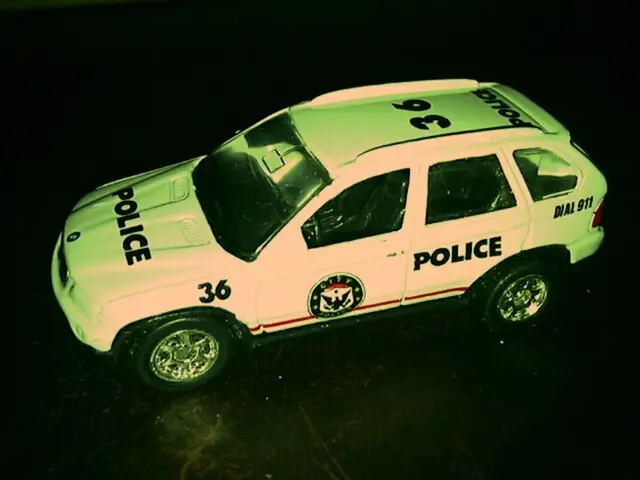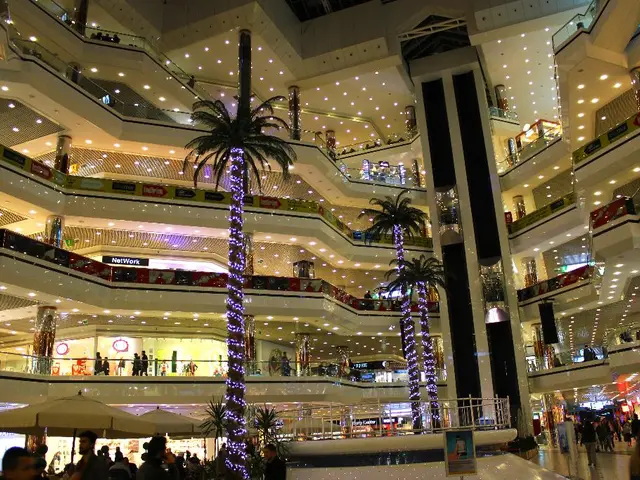Drones Revolutionize Cargo Transport and Waste Management on Mount Everest
Unmanned Aerial Vehicles (UAVs) or drones used for cargo transportation at Mount Everest - Drone Delivery Services Dominate Cargo Transportation on Mount Everest
Listen up, folks! Drones are taking over the skies of the world's highest peak, Mount Everest, and they're making a massive difference in cargo transport and waste management.
From filming to glacier observation, drones have proven to be absolute game-changers in high mountains, and the Himalayas are no exception. Unmanned aerial vehicles are now revolutionizing waste removal and cargo transport on Mount Everest, aiming to make the mountain cleaner, easing the work of the Sherpa guides and porters, and ensuring a safer climbing experience.
"Our drones are in charge of carrying ladders, tents, ropes, and oxygen bottles," says Raj Bikram Maharjan, CEO of Airlift Technology, based in the Nepali capital Kathmandu. " tasks that used to take Sherpas seven hours now take only seven minutes, making life much easier."
The two China-designed cargo drones of the FlyCart 30 model work tirelessly between the base camp and Camp 1, located above 6,000 meters. They provide vital support to the Sherpa teams who help hundreds of climbers from around the globe each year in their expensive attempts to reach the Everest summit.
Safer Transport
The primary advantage of using drones is the reduction in journeys through the famous Khumbu Icefall, one of the most dangerous passes on the Nepal side. This treacherous zone is marked by ice towers and crevasses above the base camp, which climbers must conquer on their ascent. Thanks to local specialists finding a potentially safe route and making it passable with ladders and ropes, most people make it through.
Drones were first introduced through a partnership between the Khumbu Pasang Lhamu municipality and Chinese manufacturer DJI, originally intended solely for waste disposal. After a successful trial phase in spring 2024, they were then taken over by Airlift.
Support for Drone Operations
The municipality continues to work alongside the Sagarmatha Environmental Protection Committee to support drone operations, ensuring the route through the Khumbu Glacier remains passable and waste on Everest gets cleared. "Since the pilot project, we have removed hundreds of kilograms of waste from Everest and Ama Dablam," says the mayor of the municipality, Mingma Chhiri Sherpa. Ama Dablam, a 6,812-meter-high peak located near Everest, is also part of their efforts.
A DJI drone can carry up to 40 kilograms of cargo for nine minutes with just one battery or 30 kilograms in 18 minutes with two batteries. Although performance drops significantly at higher altitudes, the number of drone deployments is increasing.
Last year, drones carried oxygen bottles to Camp 1 and returned with waste. This season, they were also used for surveying the Khumbu Icefall and finding new routes. "We can now perform 3D mapping to determine where crevasses are and their depth," says Maharjan.
Dangers of Ascent
The installation of fixed ropes and the carrying of heavy loads can be dangerous even for experienced Sherpas. Between the first ascent of Everest in 1953 and 2024, 227 people lost their lives on the South side of the highest peak in Nepal, according to the Himalayan Database. A third of them perished in and around the Khumbu Icefall. Most of the deceased were Sherpas.
There is concern that the use of drones could negatively impact the employment of Sherpas. Operators, however, have considered this. "But the Sherpas are extremely happy about it. Due to the natural dangers, many do not want to work in the Khumbu Icefall," says Maharjan. "They are overjoyed that the work can be done by drones."
Quieter than Helicopters
Professional mountaineer Jost Kobusch is significantly less troubled by drones compared to helicopters. "While filming might require helicopters, it's a different ball game here," says Kobusch, having recently embarked on a risky solo tour on Everest in winter. "In this specific field of use, it's possibly better to employ drones. Especially the Everest region is already under the burden of helicopter noise. It's like a bustling highway, with helicopters flying up and down." In contrast, if a drone flies high enough, it becomes practically inaudible.
Donkeys and Yaks
Traditional transportation methods have long been relied upon by mountaineers in traversing the demanding Himalayan terrain. Lower down, loads were transported by human porters or donkeys, while yaks - a high-altitude cattle species - took over duties closer to the base camp. Despite the rising use of helicopters, this older transportation system remains viable to some extent, thanks in part to the persistence of certain regulations and community pushback.
"A bright future for drones"
Expedition organizers welcome this development, with organizer Lukas Furtenbach stating, "Drones could potentially save lives because they help reduce the navigating labor forces through the dangerous Khumbu Icefall." Moreover, Sherpas would receive the same wages if drones were used regularly.
Nevertheless, high costs currently restrict access to this technology. With acquisition costs of around $50,000 per drone, smaller outfitters might hesitate to invest. Despite these financial barriers, Maharjan still anticipates a drone boom. "Drones have a promising future on Everest and throughout the Himalayas."
- While the Commission works on proposing a directive for the protection of workers from risks related to ionizing radiation, the manufacturing industry might consider investing in drone technology for tasks such as cargo transportation and waste management in harsh environments like Mount Everest's industry, as it can enhance safety and efficiency.
- In the ever-evolving field of technology, the finance sector could benefit from the growingApplication of drones in industries like sports, where athletes need constant monitoring and analysis of their performance. Drone-captured data can provide insights that can help in making informed decisions about training, strategies, and equipment.
- As the use of drones in various industries continues to grow, it's essential to ensure that existing workers are reskilled or given opportunities to transition into roles that complement the new technology, rather than being displaced. This will help preserve the skills and knowledge cultivated within industries, and contribute to a seamless transition towards a more technologically advanced future.








